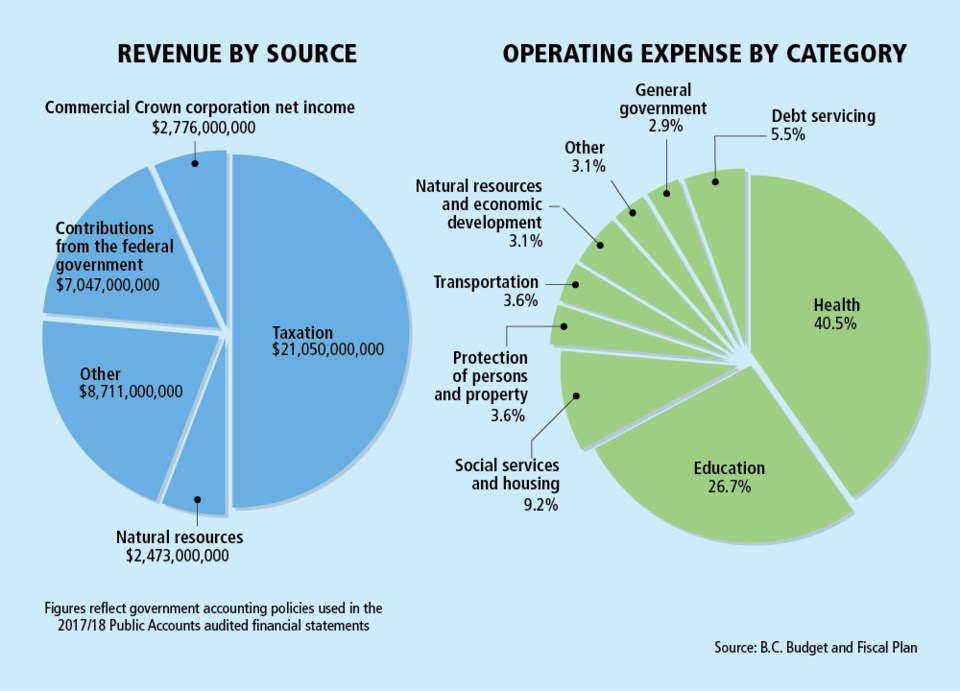B.C.’s debt is climbing as the province launches a $20-billion capital investment plan over three years to pay for schools, roads and health-care facilities.
Finance Minister Carole James said B.C.’s economy is thriving.
The province has eliminated its operating debt for the first time in four decades, she said. Growth of 2.5 per cent is expected this year, along with a $274-million surplus.
B.C. is the only province with a triple-A credit rating from the three major international rating agencies, and economic growth is expected, James said.
Rating agencies review the taxpayer-supported debt-to-GDP (gross domestic product) ratio, which James said is at its lowest point since the 2008 financial crisis: 15 per cent for 2019-20.
Rating agencies review that ratio, as well as the taxpayer-supported debt-to-revenue ratio, which is anticipated to come in at 81.5 per cent in 2019-20.
B.C.’s total debt is predicted to stand at $72.5 billion in 2019-20, up from $67.9 billion in 2018-19.
Jock Finlayson, executive vice-president and chief policy officer for the Business Council of B.C., said the organization is comfortable with the 15 per cent taxpayer debt-to-GDP, pointing out B.C. has one of the lowest ratios in Canada. “We do have a pretty strong balance sheet.”
GDP refers to the value of goods and services produced in a particular area over a specific time period, normally one year.
The debt-to-revenue ratio reflects the province’s ability to service its debt. Revenues for 2019-20 are anticipated to be $59 billion.
“So B.C. looks pretty good on both of those measures. That’s been true for quite a few years,” said Finlayson, who was happy to see a $20-billion investment in infrastructure announced.
“There is a lot of unmet need for capital in this province” for projects such as roads, bridges, hospitals and school retrofits, he said.
The business council supports a higher level of capital spending because it is comfortable with the debt-to-GDP ratio, Finlayson said.
Although there is a possibility of softening revenues as the real estate market continues to adjust, there is a fair amount of wiggle room in the budget, he said. Other revenue items will likely perform more strongly.
“Overall, we are comfortable with the fiscal forecast. I think it is pretty reasonable.”
However, Finlayson said that while the government is putting more money into worthwhile programs such as child care, housing and anti-poverty initiatives, a continued growing economy is needed to cover those costs.
“The budget does not pay sufficient attention to the headwinds facing the economy due to slower global growth and rising tax and regulatory costs here at home,” he said.
“We wonder where future economic growth will come from to support the spending measures outlined in this budget over time.”
He pointed to mixed economic signals in the province, such as sluggish retail sales and increased migration to other provinces.



